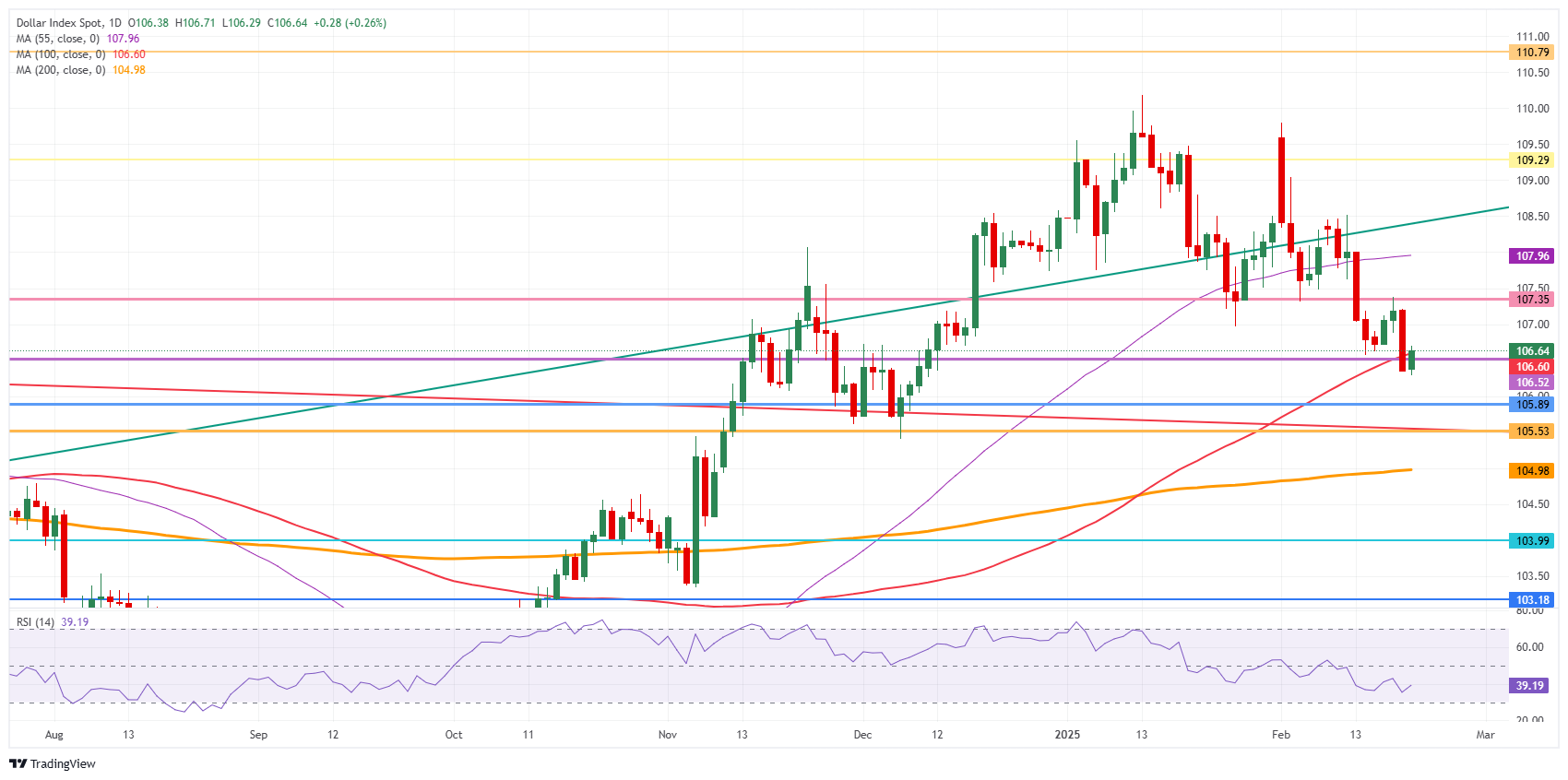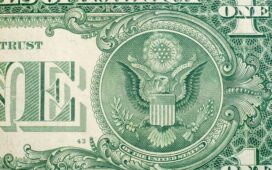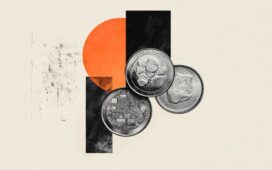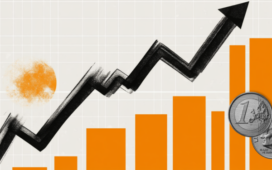- The US Dollar still sees gains after a rather disappointing US PMI release.
- The US economy is no longer outpacing the Eurozone.
- The US Dollar Index (DXY) heads back to the mid-106.00 region.
The US Dollar Index (DXY), which tracks the performance of the US Dollar (USD) against six major currencies, is trading around 106.50 at the time of writing after a rather mixed and disappointing United States (US) preliminary Purchase Manager’s Index (PMI) release for February. Main element which stood out was the Services sector that fell into contraction by 49.7, missing the 53.0 estimate and below the January 52.9 reading. The uptick in the Manufacturing sector helped to give some counterweight to the otherwise rather disappointing Services number.
The University of Michigan will release its Consumer Sentiment Index and Inflation expectations as well for January’s final reading as last component. From there all eyes will shift to Sunday when German elections are due to take place.
Daily digest market movers: In the same rut
- In the early European trading session, the preliminary Purchasing Managers Index (PMI) data for February was already released in several European countries. What stood out:
- French HCOB Services PMI fell further into contraction to 44.5, missing the 48.9 estimate and contracting further from the previous 48.2.
- European HCOB Services PMI fell to 50.7, missing the 51.5 estimate and below the previous 51.3 reading.
- German HCOB PMIs beat estimates despite the Services component that came in at 52.2, missing the 52.5 estimate and below the January 52.5 reading.
- The US preliminary S&P Global PMI data for February is out:
- The manufacturing sector came in at 51.6, beating the 51.5 consensus and beating the January 51.2.
- The services sector fell into contraction by 49.7, a big miss on the estimate 53.0, and far below the January 52.9.
- The University of Michigan will release its final January reading at 15:00 GMT:
- The Consumer Sentiment Index should remain stable at 67.8.
- The 5-year Consumer Inflation Expectation index should rise steadily by 3.3%.
- Equities have given back all their intraday gains and are looking flat to negative at the start of the US trading session.
- The CME FedWatch tool shows a 47.5% chance that interest rates will remain unchanged at current levels in June.
- The US 10-year yield trades around 4.46%, slipping further and further away from its Wednesday’s high of 4.574%.
US Dollar Index Technical Analysis: Going nowhere still
The US Dollar Index (DXY) is able to reclaim a little bit of room after another downbeat performance this week. The Euro (EUR) is helping out, with the partial recovery in the DXY index this Friday after some disappointing PMI releases, especially from France. If the US preliminary S&P Global PMI data for February, due this afternoon, shows some resilience for the country’s activity, the DXY could quickly be back up at 107.00.
On the upside, the previous support at 107.35 has now turned into a firm resistance. Further up, the 55-day SMA at 107.96 must be regained before reclaiming 108.00.
On the downside, 106.60 (100-day SMA) and 106.52 (April 16, 2024, high) have acted as an alert for buyers to step in and push the DXY back up. Further down, 105.89 (resistance in June 2024) will still hold as the next firm support level. The Relative Strength Index (RSI) momentum indicator in the daily chart still has not touched the oversold barrier. Therefore, the 200-day SMA at 104.98 could be a possible outcome if a firm catalyst emerges.
US Dollar Index: Daily Chart
Inflation FAQs
Inflation measures the rise in the price of a representative basket of goods and services. Headline inflation is usually expressed as a percentage change on a month-on-month (MoM) and year-on-year (YoY) basis. Core inflation excludes more volatile elements such as food and fuel which can fluctuate because of geopolitical and seasonal factors. Core inflation is the figure economists focus on and is the level targeted by central banks, which are mandated to keep inflation at a manageable level, usually around 2%.
The Consumer Price Index (CPI) measures the change in prices of a basket of goods and services over a period of time. It is usually expressed as a percentage change on a month-on-month (MoM) and year-on-year (YoY) basis. Core CPI is the figure targeted by central banks as it excludes volatile food and fuel inputs. When Core CPI rises above 2% it usually results in higher interest rates and vice versa when it falls below 2%. Since higher interest rates are positive for a currency, higher inflation usually results in a stronger currency. The opposite is true when inflation falls.
Although it may seem counter-intuitive, high inflation in a country pushes up the value of its currency and vice versa for lower inflation. This is because the central bank will normally raise interest rates to combat the higher inflation, which attract more global capital inflows from investors looking for a lucrative place to park their money.
Formerly, Gold was the asset investors turned to in times of high inflation because it preserved its value, and whilst investors will often still buy Gold for its safe-haven properties in times of extreme market turmoil, this is not the case most of the time. This is because when inflation is high, central banks will put up interest rates to combat it. Higher interest rates are negative for Gold because they increase the opportunity-cost of holding Gold vis-a-vis an interest-bearing asset or placing the money in a cash deposit account. On the flipside, lower inflation tends to be positive for Gold as it brings interest rates down, making the bright metal a more viable investment alternative.






